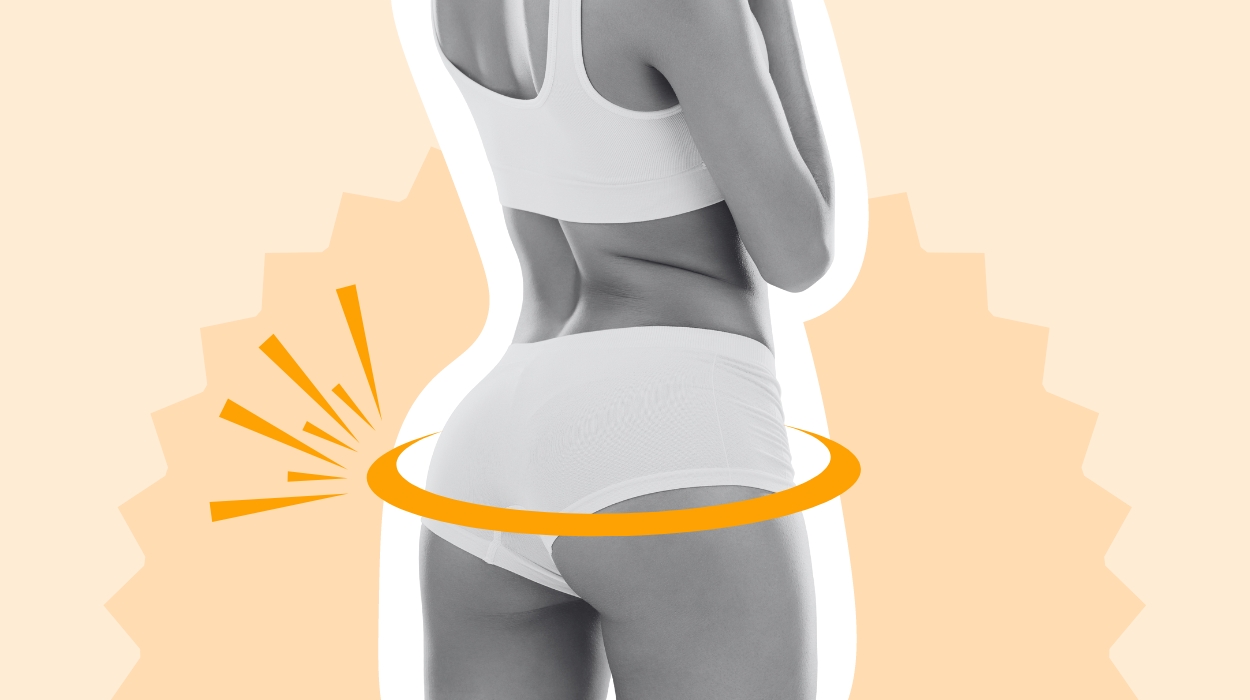Losing weight is one of the most challenging things many people struggle with as hitting the gym requires a lot of motivation and drive. Even with the help of fat-burning supplements, a strict dietary plan, or a dedicated exercise routine, getting rid of excess butt fat is still a challenge. This guide explains the most practical tips on how to reduce butt fat and achieve your desired body size.
How To Reduce Butt Fat: The Best Exercises
Here’s how to lose butt fat and thigh through exercise:
- Squats.
- High-Intensity Interval Training Exercises.
- Lunges
- Running.
- One-Leg Deadlifts
How To Lose Butt Fat: Effective Exercises
While some people go to the gym to get bigger butts, others desire well-toned smaller butts. However, most trainers focus on helping you lose weight in your belly and torso and ignore your butt fat.
Fortunately, you can lose your butt fat with a few simple exercises. Below are five methods you can try to make your butt smaller:
Squats
Squats are part of many workout routines for a good reason. A study from 2014[1] found that partial squats in conjunction with full squats can improve maximal strength training. This is because squats activate your gluteus muscles, the muscles in your butt.
Several types of squats can help you get rid of butt fat and tone your butt and thigh muscles.
Regular Squats
Regular squats are highly effective for toning and strengthening the buttocks. As you perform squats, the glute muscles are actively engaged, helping to build a firmer and more sculpted rear.
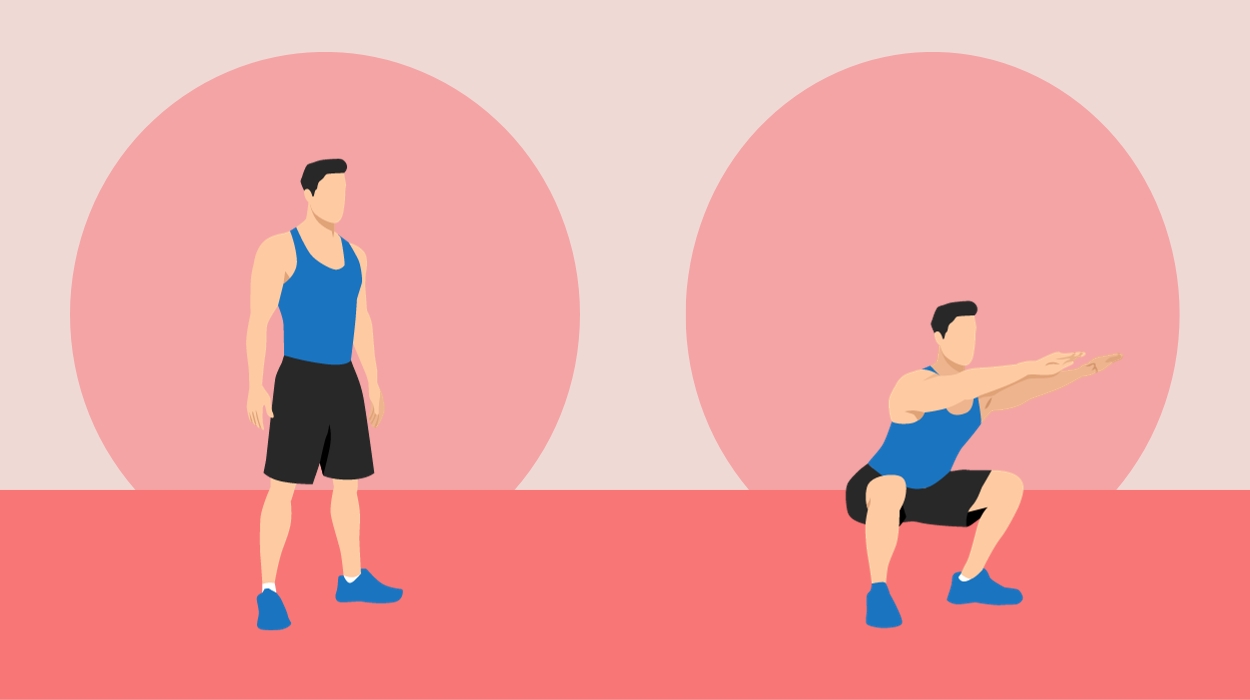
How To Do:
- Stand with your legs slightly spread.
- Start lowering your body with your knees, with your back straight, and without moving your feet. Track your knees, ensuring they don’t go past your toes.
- Bend your knees and drop your body down until your upper legs are almost parallel to the floor.
- Push your body back up and repeat the squats in sets.
As you progress, you can hold weights in front of you while you do regular squats.
Tips:
- Keep your feet shoulder-width apart, chest up, and back straight while performing squats.
- Go as low as your mobility allows while maintaining control to maximize muscle engagement.
- Gradually increase the intensity to continue challenging your lower body.
Optimal Sets And Reps: three sets of 8-10 reps.
Single-Leg Squats
Single-leg squats primarily activate the gluteus maximus,[2] which are your butt’s muscles. This exercise is a great way to activate your leg and butt muscles and promote butt fat loss.
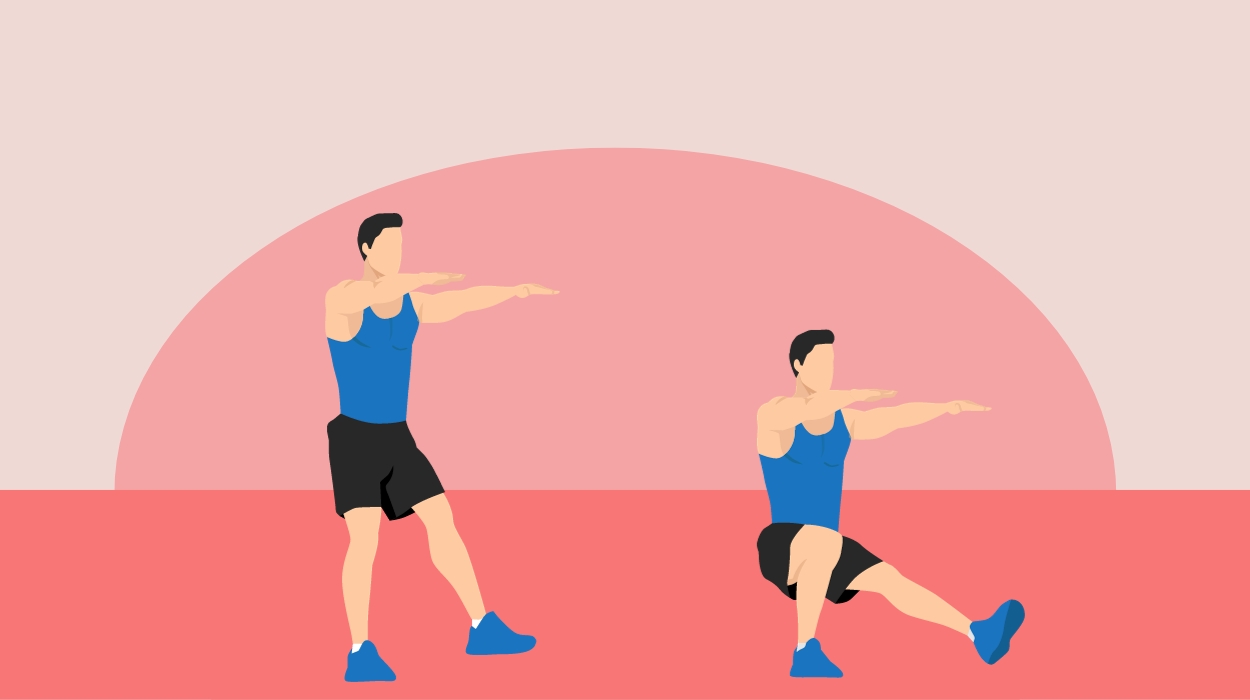
How To Do:
- Stand on one leg with the other slightly lifted and toes pointing forward.
- Hold your waist with both hands.
- Bend your standing leg slowly so that you squat until your butt is almost parallel to your knee. Keep your back straight.
- Rise back to the standing position, keeping the suspended foot above the floor.
- Repeat several times before switching legs.
Tips:
- Maintain good balance by focusing on a fixed point while performing this exercise.
- Lower your body slowly and with control, bending at the hips and knees.
- Limit your range of motion to a comfortable level to maintain good posture and stability.
Optimal Sets And Reps: three sets of 6-8 reps for each leg.
Sumo Squats
Sumo squats are excellent for achieving a well-rounded lower body and a toned, shapely butt. These squats engage the gluteal muscles more effectively than standard ones, helping to tone and sculpt the buttocks.
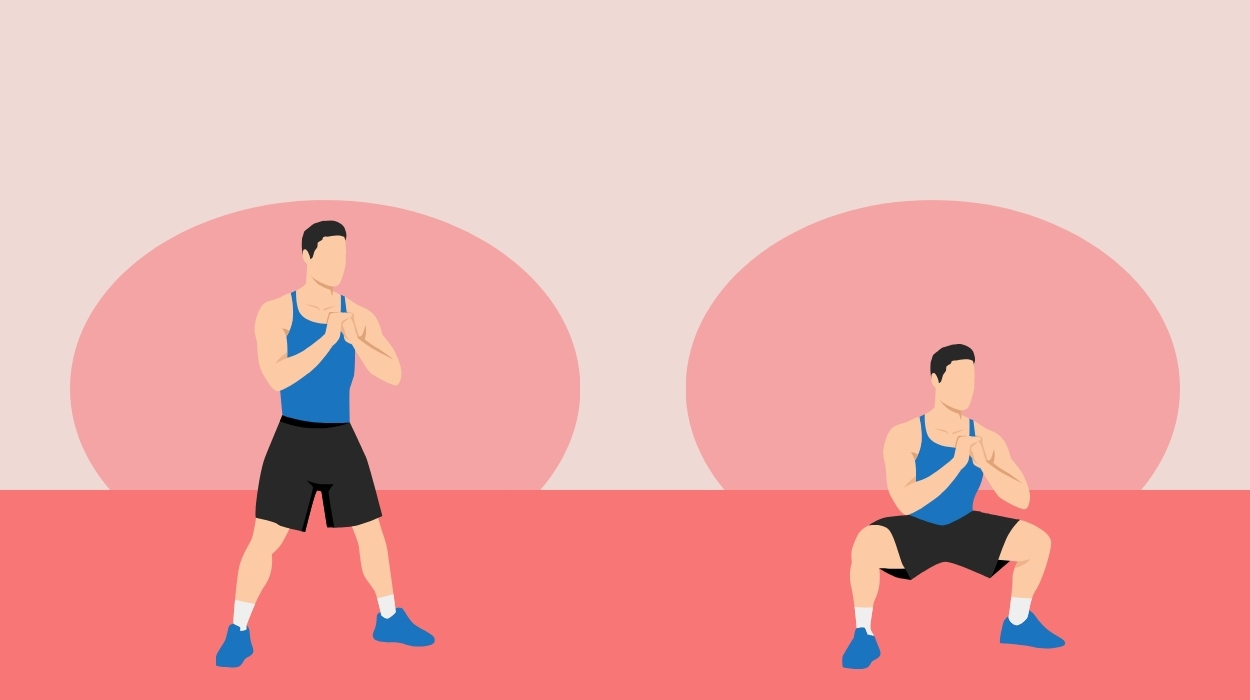
How To Do:
- Start by standing with your feet wider than shoulder-width apart. Your legs should be further apart than during normal squats.
- Stretch your arms out in front of you.
- Bend your knees and hips to lower your body, just like you would in a regular squat. Keep your arms straight.
- Start squatting slowly until your thighs are parallel to the ground.
- Return to the standing position.
- Repeat the squats for the desired number of repetitions and sets.
Tips:
- Ensure the wide stance to target the inner thighs and engage the glutes effectively.
- Keep your chest up, shoulders back, and core engaged while performing sumo squats.
- Aim to squat until your thighs are parallel to the ground or as low as your mobility allows while maintaining control.
Optimal Sets And Reps: three sets of 10-12 reps.
Split Squats
A study[3] showed that split squats are more effective at activating the gluteus maximus than deadlifts and good mornings. Split squats is an exercise that targets the muscles on the back of your body. As a result, split squats are more likely to promote butt fat loss
Split squats are easy to do, whether it’s your first time at the gym or you’ve been working out regularly.
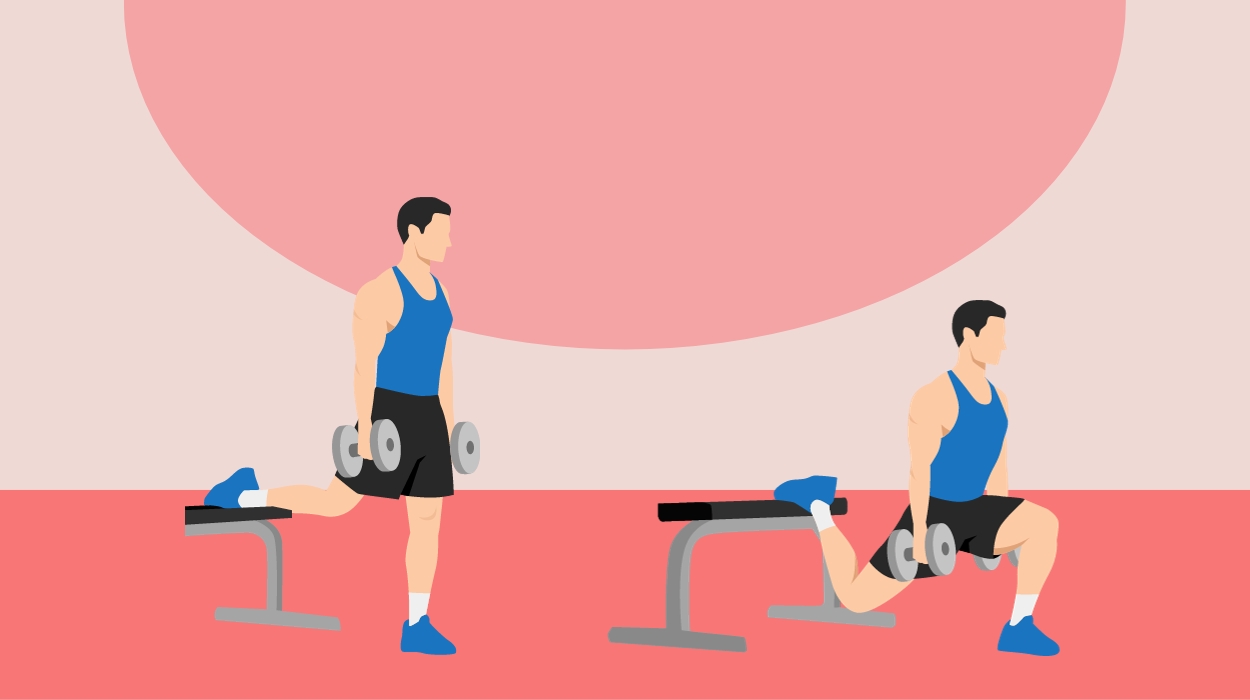
How To Do:
- Stretch out your arms while holding a weight like a kettlebell.
- Place your left foot on a bench behind you.
- Start squatting slowly with your right leg and go down until your knee is halfway bent.
- Return to your starting position and repeat the squats without changing legs for a set.
- Do a different set with the right foot on the bench.
Tips:
- Focus on your balance by keeping your front foot planted firmly on the ground and your rear foot elevated on a bench or step.
- Lower your body slowly and with control, bending your front knee to a 90-degree angle or slightly lower.
- Avoid rounding your shoulders or collapsing your chest during the split squat.
Optimal Sets And Reps: three sets of 8-10 reps for each leg.
High-Intensity Interval Training Workouts
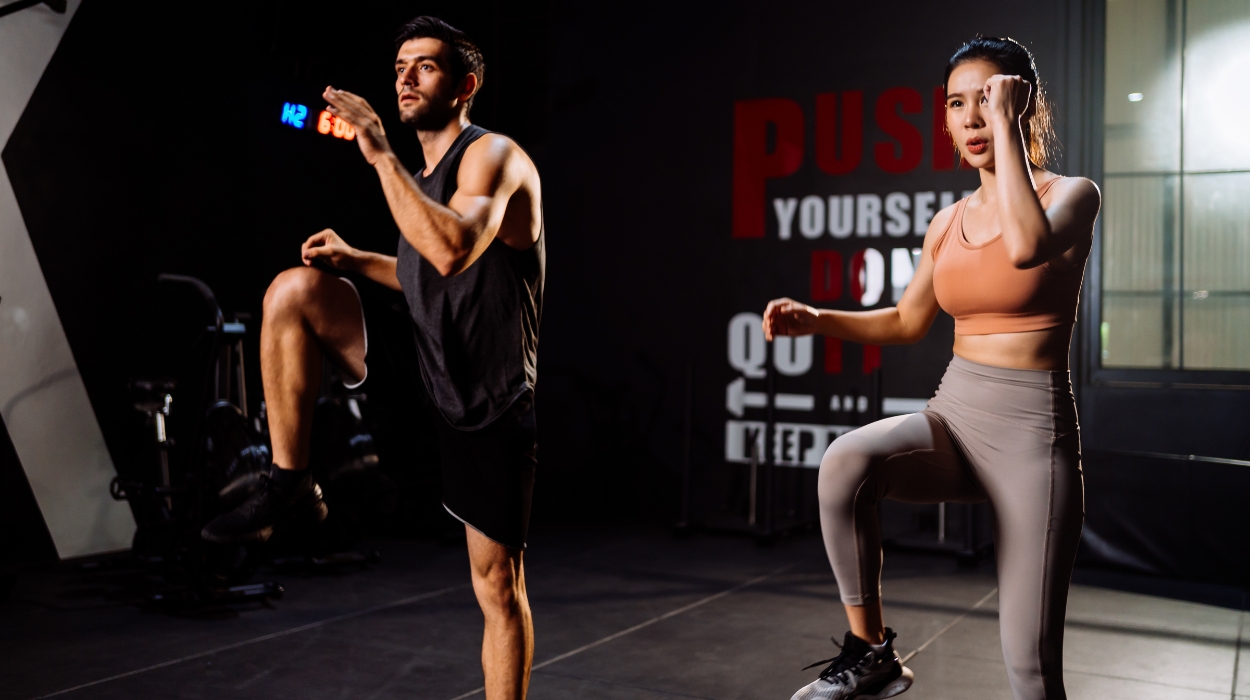
Have you ever seen a person at the gym running on the treadmill at high speeds, then immediately doing pushups? This is a type of training called High Intensity Interval Training (HIIT). HIIT workouts are best for those who want to lose weight fast and have a healthy heart.[4] They help blood pump fast around the body and offer protection against many metabolic diseases.[5]
HIIT exercises involve doing one exercise at maximum effort for a short time. Unlike moderate-intensity exercises, HIIT workouts push your body to its limits. This means you don’t have to exercise for as long.
A HIIT set might involve the following:
- Doing sumo squats.
- Running at 6 miles an hour on the treadmill.
- Doing pushups.
Another[6] study found that HIIT exercises are as efficient as moderate-intensity prolonged continuous exercise training at burning overall body fat. You can incorporate HIIT into your workout routine to improve your cardio fitness and help you lose butt fat.
Lunges
Lunges are often disregarded, but they’re one of the most effective exercises to help with losing butt fat. This exercise not only enhances the aesthetics of your buttocks but also contributes to improved lower body strength, stability, and balance.
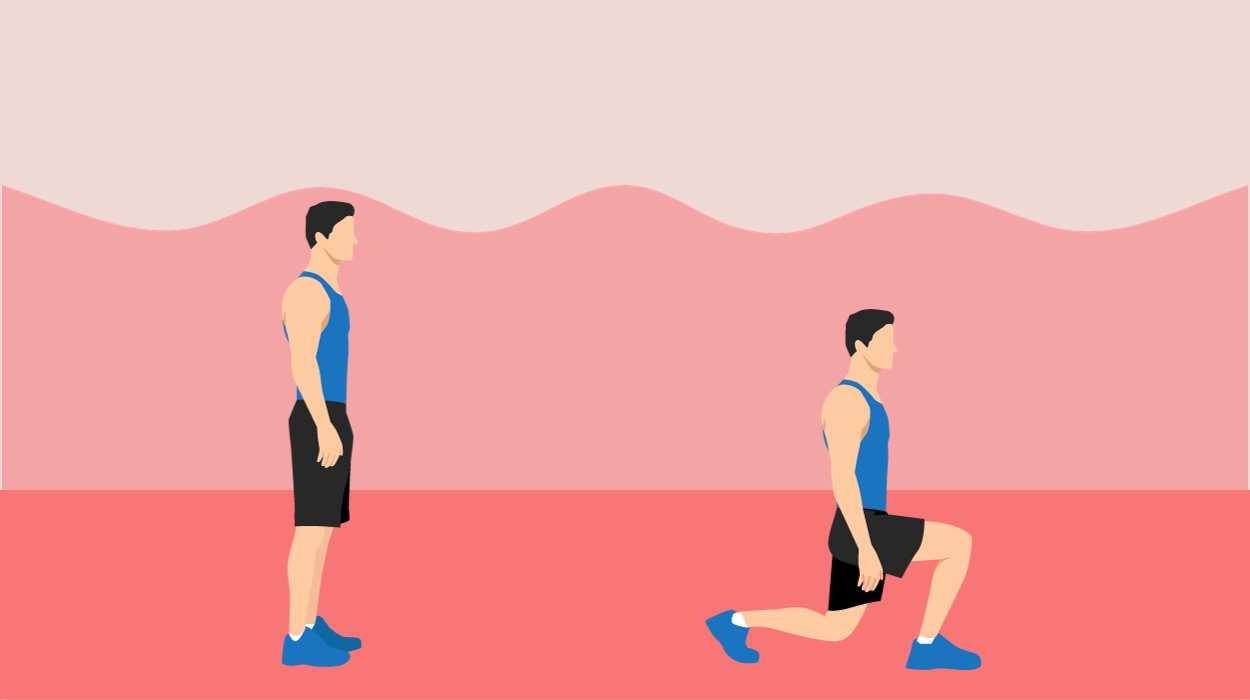
How To Do:
- While standing with a slight gap between your feet, step forward with your right foot and squat. Go down until both your knees are halfway bent.
- Ensure your front leg is directly over your ankle while the back knee hovers just above the ground.
- Press through your front heel to return to the starting position.
- Repeat several times, then switch feet.
Tips:
- Keep your chest up, shoulders back, and core engaged while performing lunges.
- Avoid letting your front knee extend beyond your toes to protect your knee joint.
- Try to lower your body until both knees are at a 90-degree angle or slightly lower.
Optimal Sets And Reps: three sets of 10-12 reps for each leg.
Running

Running is a popular exercise because it has immense health benefits[7] and few equipment requirements. Studies show[8] that you can experience more significant weight loss from running than walking. Running is also good for your mental health.[9]
Your lower body’s muscles,[10] including your butt, are also active when you run, which can help you burn butt fat and lose excess weight.
To maximize the benefits you’ll get from running, you should set a running routine.[11] For example, you can run every morning or evening.
One-Leg Deadlifts
If you’re working out to strengthen your lower body, deadlifts are a great option. Deadlifts strengthen your thigh muscles and give you a well-toned butt.
One-leg deadlifts are easy to do and can be incorporated into any workout routine.
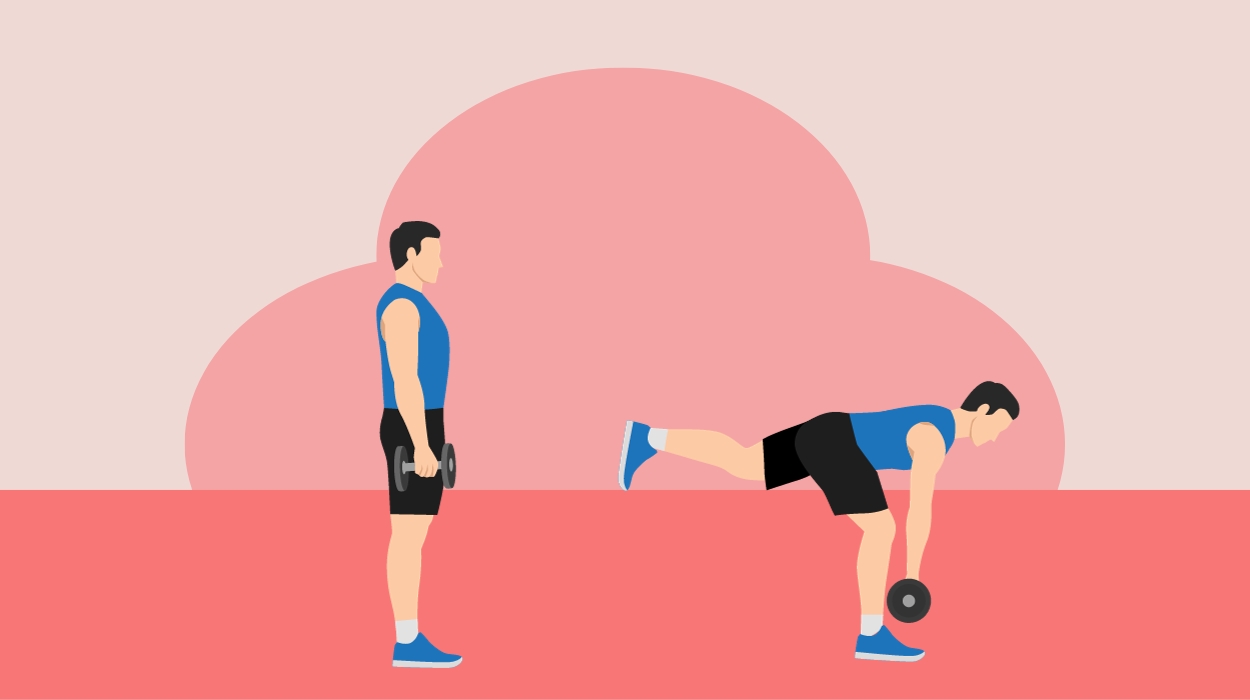
How To Do:
- Start by standing with both feet firmly on the ground and your hands hanging in front of you. You can also have a weight on the ground in front of you.
- Shift your body forward with the hip acting as the hinge, allowing one leg to slide up behind you while the other remains grounded for support.
- Keep leaning forward until you touch the weight. Grab it without leaning on it.
- Use your hamstrings and butt muscles to pull your weight back to the starting position.
- Take a short pause and repeat the exercise.
Tips:
- Perform the exercise with slow and controlled movements to engage the right muscles and reduce the risk of injury.
- Keep your spine neutral and maintain good posture to prevent strain on your lower back.
- Begin with a manageable weight and perfect your form before increasing resistance.
Optimal Sets And Reps: three sets of 8-10 reps for each leg.
Causes Of Excess Butt Fat
Sometimes, excess subcutaneous fat accumulates in your butt and abdomen. This can be due to many reasons, from a bad diet to stress.
An Unhealthy Diet
Eating an unhealthy diet is one of the main reasons you’ll find yourself regaining lost weight.[12] If you’re eating a high-calorie, large-portion diet, you might regain butt fat despite working out.
To lose weight, you’ll need to burn more calories than you eat.[13] This is called a calorie deficit. Eating smaller portions and exercising can help you achieve a calorie deficit.
Lack Of Exercise
You need a calorie deficit to lose excess weight and burn excess fat. If you’re physically inactive, you’ll accumulate more calories than you’re burning. As a result, you’ll gain or retain butt fat.
Stress
When you’re stressed, your body releases a chemical called cortisol.[14] This chemical affects your metabolism[15] and consequently stimulates sugar cravings.[16] This may increase sugar intake and cause fat to build up around your body.
Lack Of Sleep
Inadequate sleep may affect your metabolism levels[17] negatively. This makes it more difficult for your body to burn excess fat.
Other Methods To Reduce Fat And Have A Toned Butt
Besides the exercises listed above, there are a few other things you can do to gain a well-toned butt. Here’s how to get rid of butt fat fast:
Get Enough Sleep
While sleep might not be the most obvious way to help you reduce fat and have a toned butt, it’s an essential step.
Here are some behavioral remedies[18] to help you sleep better:
- Create a sleep schedule. Have a set time for sleeping and waking up every day.
- Only go to bed when you’re sleepy.
- Switch off all electronic devices, including your phone, 30 minutes before bed.
- Keep your bedroom comfortable and relaxing.
- Don’t eat heavy meals before you sleep.
- Avoid drinking alcohol or coffee before bed.
Getting enough sleep will also reduce your stress,[19] which benefits your mental health and metabolism. Once you’re well-rested, you’ll also be able to hit the gym more energetically and burn more fat.
Eat A Balanced Diet And Practice Portion Control

Eating a balanced diet is essential even when using a weight loss supplement. When you eat a balanced diet, you’ll consume fewer calories and make it easier to lose butt fat with exercise. Portion control[20] is also essential for weight management.
Here are a few healthy eating habits you can use to ensure your diet is helping you reduce fat and get a well-toned butt:
- Minimize sodas, energy drinks, and other sugar-filled drinks.
- Include lean protein sources like fish, tofu, and legumes in your diet plan.
- Eat nuts, olives, avocado, and other foods that are rich in healthy fat.
- Drink a glass of water before meals.
- Cook at home to ensure you choose healthy ingredients. Avoid highly processed foods and takeout.
Reduce Stress
Life can be frustrating at times, and stress is an emotion that everyone experiences occasionally. However, if you don’t manage your stress, it will affect your metabolism. This can make it hard for you to lose fat.
While different people have various ways of handling stress, you can try the following methods[21] of managing stress:
- Working out.
- Yoga.
- Mindfulness.
Reducing your stress will also help you get better quality sleep.[22] This will improve your metabolism and help your body burn excess fat faster.
Take Walks
Walking is a healthy, whole-body exercise to burn calories and help with losing fat. For best results, schedule a daily morning or evening walk.
A 2014 study[23] shows that walking with a shorter arm swing engages your gluteus medius muscle more than walking with a full swing. Try adjusting your walking style during your walks to burn more butt fat.
Conclusion
While a well-toned butt is in many people’s weight loss goals, it’s not always easy to achieve. Your body can retain excess fat in your butt for various reasons, including stress and an unhealthy diet.
By creating a well-rounded workout routine and following a calorie-deficit diet plan, you can lose butt fat effectively.
Frequently Asked Questions
Yes. You can use exercises that focus on the butt, like split squats, to lose excess butt fat.
Several factors can cause buttock fat, including stress, an unhealthy diet, lack of sleep, and inadequate exercise.
Yes. While different types of squats have various effects on your butt, they can make your butt smaller. For instance, split squats exercise your gluteus maximus, helping you lose excess fat.
Squats are the most effective for burning butt fat. Specifically, a 2017 study[3] found split squats to be the most effective for exercising your butt muscles.
 Evidence Based
Evidence Based
